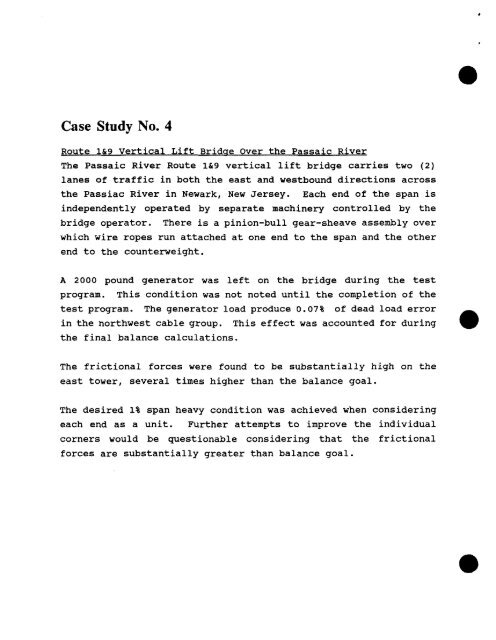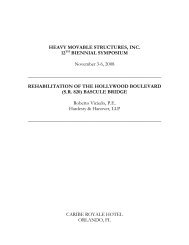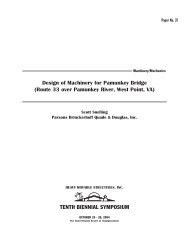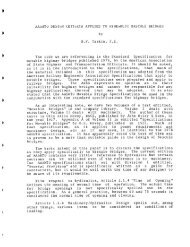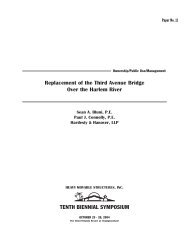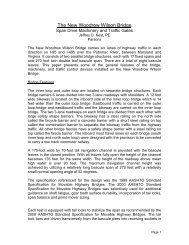Balancing of Movable Bridges by the Strain Gauge Technique
Balancing of Movable Bridges by the Strain Gauge Technique
Balancing of Movable Bridges by the Strain Gauge Technique
Create successful ePaper yourself
Turn your PDF publications into a flip-book with our unique Google optimized e-Paper software.
Case Study No. 4poute 1&9 Vertical Lift B ridse Over <strong>the</strong> Passaic RiverThe Passaic River Route 1&9 vertical lift bridge carries two (2)lanes <strong>of</strong> traffic in both <strong>the</strong> east and westbound directions across<strong>the</strong> Passiac River in Newark, New Jersey. Each end <strong>of</strong> <strong>the</strong> span isindependently operated <strong>by</strong> separate machinery controlled <strong>by</strong> <strong>the</strong>bridge operator. There is a pinion-bull gear-sheave assembly overwhich wire ropes run attached at one end to <strong>the</strong> span and <strong>the</strong> o<strong>the</strong>rend to <strong>the</strong> counterweight.A 2000 pound generator was left on <strong>the</strong> bridge during <strong>the</strong> testprogram. This condition was not noted until <strong>the</strong> completion <strong>of</strong> <strong>the</strong>test program. The generator load produce 0.07% <strong>of</strong> dead load errorin <strong>the</strong> northwest cable group. This effect was accounted for during<strong>the</strong> final balance calculations.The frictional forces were found to be substantially high on <strong>the</strong>east tower, several times higher than <strong>the</strong> balance goal.The desired 1% span heavy condition was achieved when consideringeach end as a unit. Fur<strong>the</strong>r attempts to improve <strong>the</strong> individualcorners would be questionable considering that <strong>the</strong> frictionalforces are substantially greater than balance goal.


